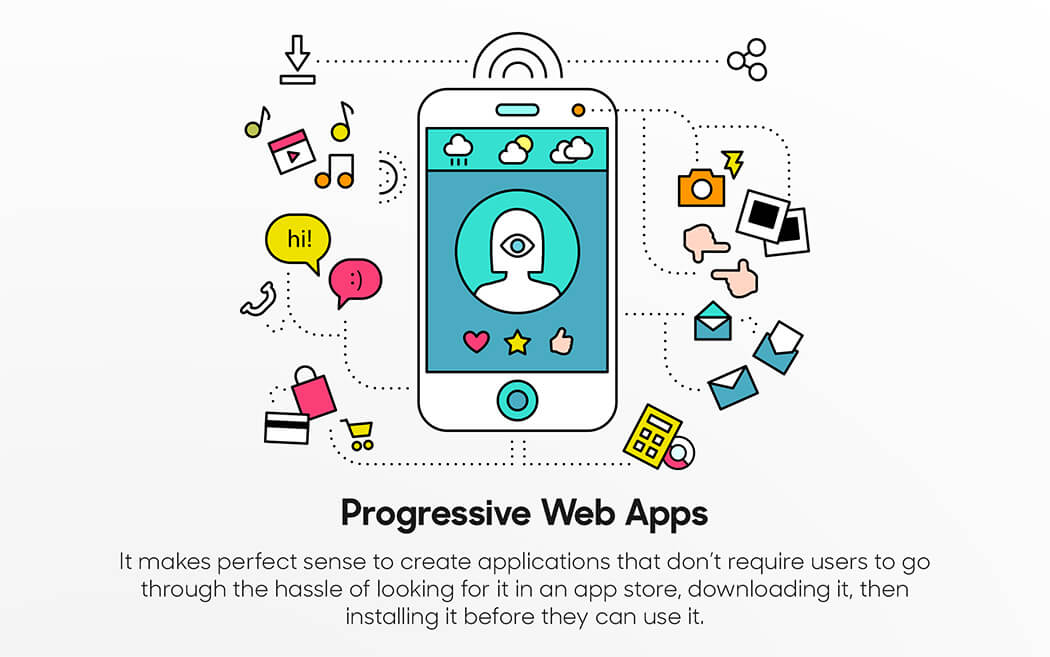When I first heard, I thought how quickly technology is changing and I did not had any clue of what a progressive web app would be!
That is true though, the technology is emerging quickly to make the world a better place and not so confusing once we understand.
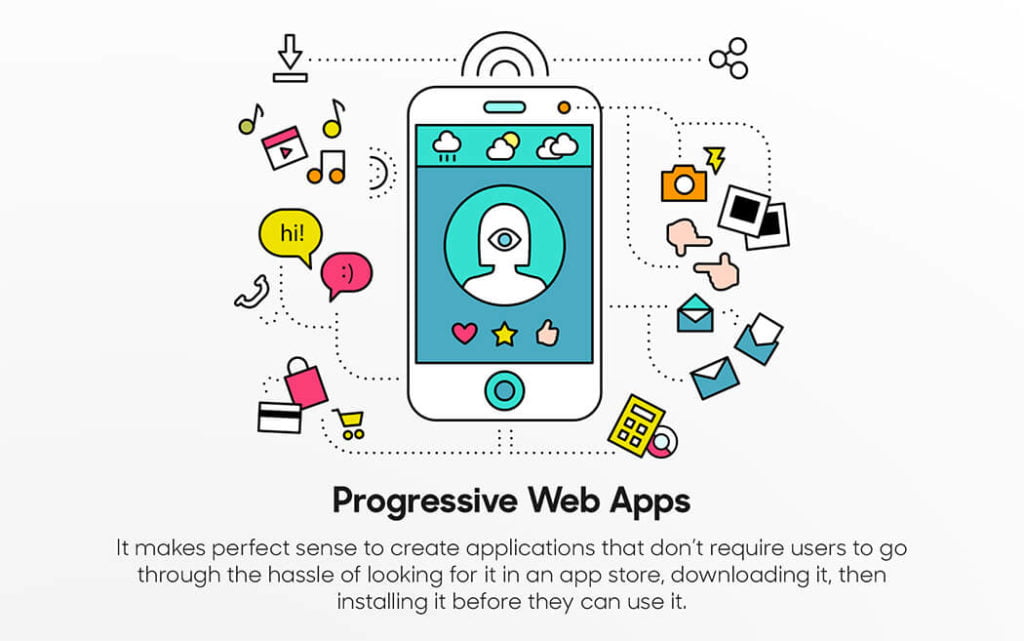
A “Progressive web app” is basically a well-developed web page that loads and feels like a native app. Or to get a better understanding, the Progressive web app features the combination of a native app with the flexibility of the web in itself. The best thing these apps or web pages offer are the functionalities like work offline and push notifications.
Sounds confusing? I don’t think so!
All of this will start making more sense once we understand how to develop one and how it works.
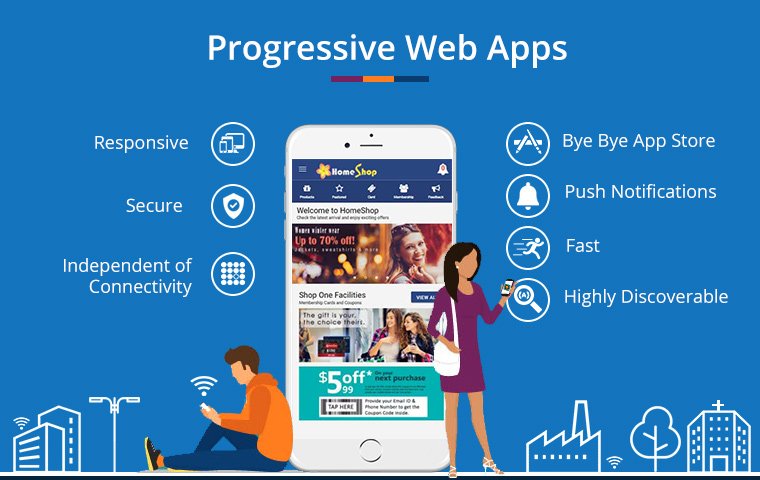
Features of Progressive Web App:
The first question that I would ask myself if I am learning something new would be – WHY?
To answer this, let’s take a look at the features that Progressive Web App is offering and why it has an advantage over the conventional native apps.
1. Progressive – The term progressive gives it the major advantage. The PWA’s in a term is almost independent of the platform which works for every user.
2. Responsive – The Progressive Web App is responsive on all the devices, be it a mobile phone, desktop system, TV browser or tablets. Moreover, as this is not deicing specific, it will also work on any future devices yet to emerge.
3. Connectivity Independent – The best thing about a Progressive Web App is, it works offline as well. Most of the feature is supportable on a low-quality network. The countries where the Internet is still an issue would be much benefited with this. The technology used to make this possible is called “Service Worker” which majorly makes if different from the conventional web page.
4. App-like – Though this is a well-developed web page, more like a website, the user will still get a feel same like a native app. The Progressive Web App is developed with app-style navigation and interaction pattern.
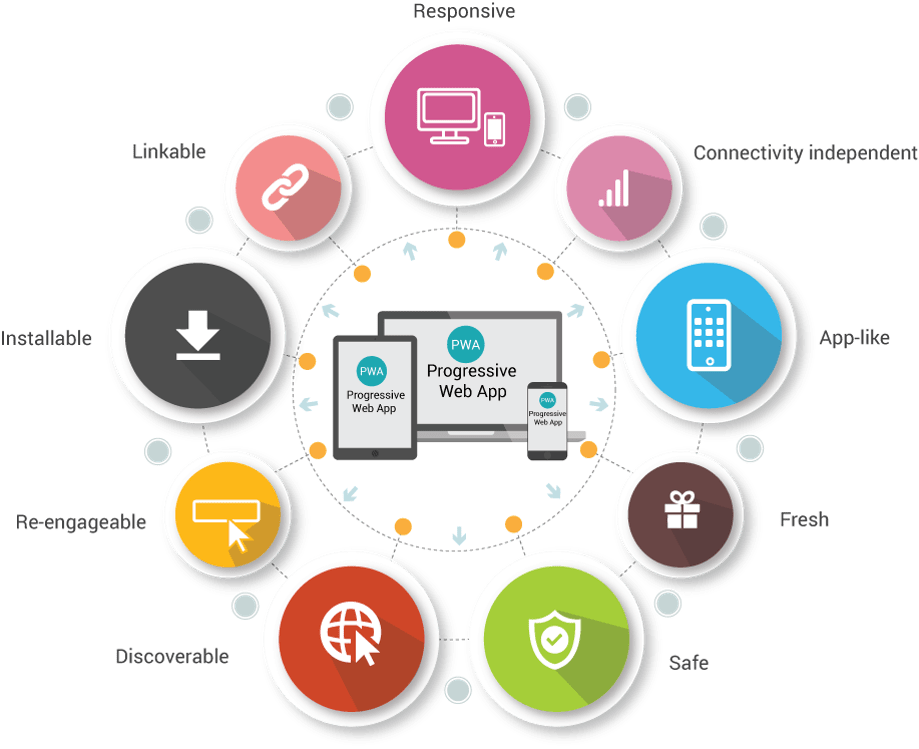
5. Auto-update – Another interesting feature with which Progressive Web App attract its audience is by staying always fresh. When I say always, its always. A big round of applause for the “Service worker” here.
6. Secure – The checklist already follows and mandate HTTPS for the developers, which prevent tampering of the content on the web.
7. Application Identification – With everything being said about how it’s not an application and just a web page, thank the W3C manifests and service worker registration scope allowing search engines to find PWA as an App.
8. Push Notification – Progressive Web App allows us to send app notifications to the user as well. Great, right! Though the feature is only available on Android as of now, its a breakthrough.
9. No Installation – Shocked! The PWA’s allows the user to keep the apps on their home screen just by clicking on the “Add to home screen” button and its not mandate to download from any app store.
10. URL Based – While the feel and looks are more like an app, this still is a web page and hence is easily accessible by the URL. This also enables the feature of sharing the Progressive web app with ease, just share the link and its shared.
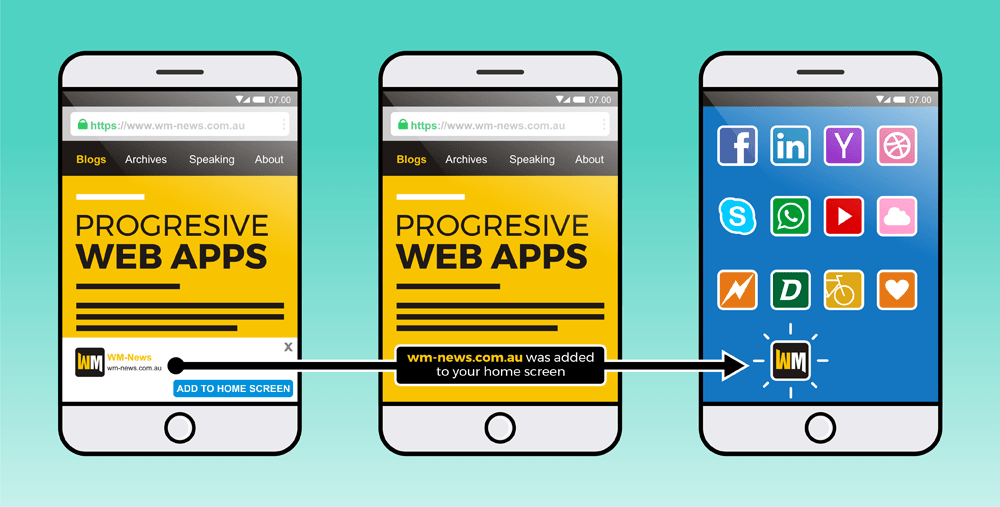
The Progressive Web Apps are the modification over the current technology that we are using, and gives a hell lot of advantage! They are fast, works offline, easy to install and share, safe and fresh always, device and platform independent – what else can you ask for!
While all of the above are the basics, I am in the line of writing another article focusing on developers which will be focused on the technical aspect in depth on “How to build my first Progressive Web App“. Stay tuned!
Conclusion:
In this article, we had discussed the Introduction of Progressive Web Apps. You can share your views in the comment section. Happy Learning …!!!
Also Read: “Getting Started With IOT ( Internet Of Things )”
